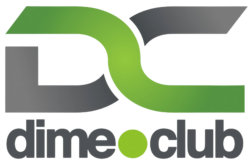
Creating a profitable business plan is essential for any entrepreneur looking to start or grow a successful business. A well-thought-out business plan can help guide the direction of your business, attract investors, and ensure you stay on track to reach your goals. In this article, we will explore the key components of a profitable business plan and provide tips and suggestions to help you create one that will set your business up for success.
The first key component of a profitable business plan is a clear and concise executive summary. This section of the business plan should provide a brief overview of your business, including its mission, goals, and the problem your business solves in the market. The executive summary should also outline the key points of the business plan and why investors should be interested in your business.
Next, you will need to outline your business concept and market analysis. This section should include a detailed description of your product or service, your target market, and an analysis of the competition. You should also include information on the size of the market, its growth potential, and any trends that may affect your business. This section is crucial for demonstrating that you understand your target market and have a viable business concept.
One of the most important aspects of a profitable business plan is the financial projections. This section should include a detailed financial forecast that outlines your revenue projections, expenses, cash flow, and profitability. It is important to be realistic in your financial projections and provide evidence to support your estimates. Investors will want to see that you have a solid understanding of your financials and a plan for achieving profitability.
In addition to financial projections, your business plan should also include a marketing and sales strategy. This section should outline how you plan to promote your product or service, reach your target market, and generate sales. You should also include information on your pricing strategy, distribution channels, and any partnerships or collaborations that will help you reach your sales goals. A strong marketing and sales strategy is essential for attracting customers and driving revenue growth.
Another key component of a profitable business plan is the operational plan. This section should outline how your business will operate on a day-to-day basis, including your organizational structure, staffing needs, and any technology or equipment requirements. You should also include information on your suppliers, production processes, and quality control measures. A well-thought-out operational plan is crucial for ensuring that your business can deliver its products or services efficiently and effectively.
Finally, your business plan should include a section on risk management and contingency planning. This section should outline any potential risks or challenges that may affect your business, such as economic downturns, changes in the market, or competitive pressures. You should also include a plan for how you will mitigate these risks and respond to unexpected events. Demonstrating that you have considered potential risks and have a plan in place to address them will give investors confidence in your ability to navigate challenges and succeed in the market.
In conclusion, creating a profitable business plan is a critical step for any entrepreneur looking to start or grow a successful business. By including key components such as an executive summary, business concept and market analysis, financial projections, marketing and sales strategy, operational plan, and risk management and contingency planning, you can create a comprehensive and effective business plan that will set your business up for success. By following these tips and suggestions, you can create a business plan that will attract investors, guide the direction of your business, and help you achieve your goals.









